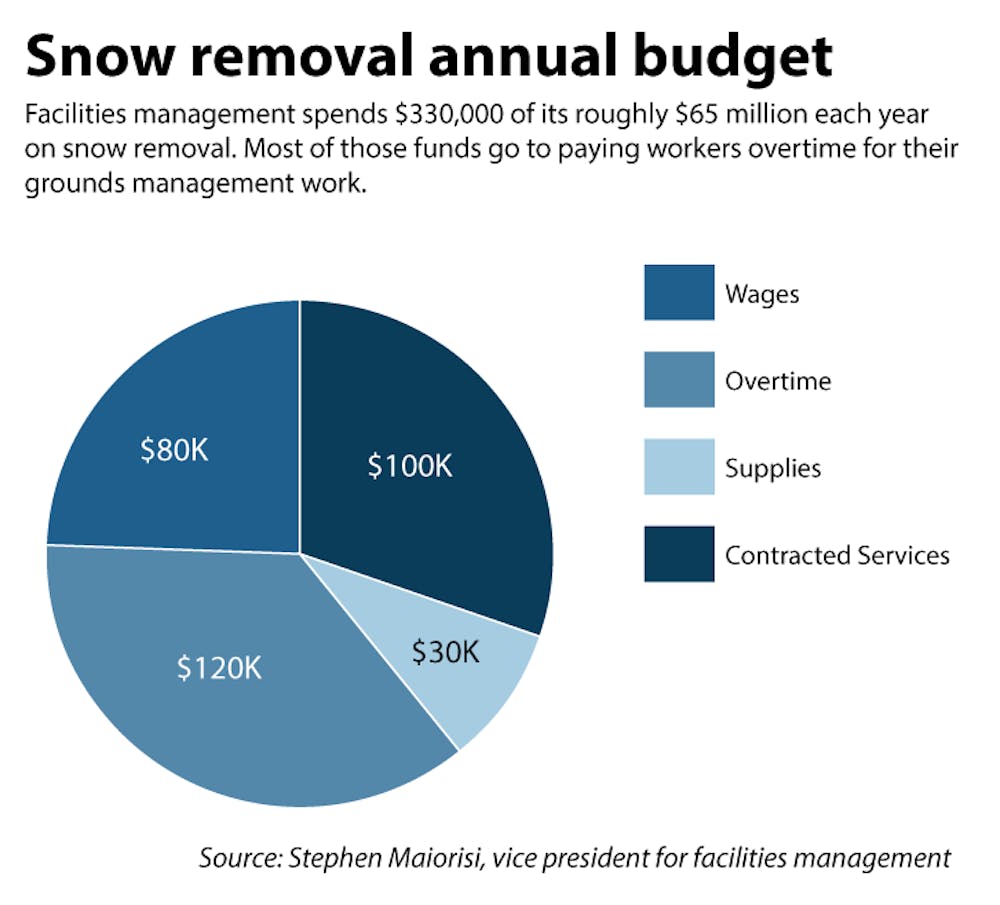Last week’s low temperatures and snowfall brought new challenges to Facilities Management and University Transportation. While the University closed Feb. 8 and students did not attend class, staff members and administrators came in to clear the snow and maintain University operations despite the cold.
Instead of ice or snow accumulation, the biggest issues posed by winter weather this year have been due to cold temperatures, which cause pipes and other devices to freeze, said Stephen Maiorisi, vice president for facilities management. When temperatures dropped below zero last week, air conditioners used to cool the servers in the data center of the Center for Information and Technology froze. Because of this malfunction, Facilities Management switched operations to the identical backup system in the Geology-Chemistry Research Building, Maiorisi said.
When the University closed Feb. 8 and all classes were cancelled, facilities workers arrived early to begin clearing parking lots and pedestrian paths for students, faculty members, staff members and visitors.
Whether the University is open or not, students must travel between their residence halls, dining halls and health services, Maiorisi said.
Maiorisi and his colleagues begin to prepare for winter storms as soon as they hear about them.
The day before a storm arrives, staff members spread sand and ice-melt pellets, which are stockpiled around campus before the start of the season.
Depending on when the weather is expected to hit, workers may be instructed to come in early. If the University is closed, only the staff members specifically needed are asked to work, and the rest stay home.
Staffing decisions such as these affect the snow removal expenditures due to the cost of paying workers overtime.
Even if the University is open, staff members working longer than their normal shifts are paid overtime, Maiorisi said. When the University is closed, those asked to come in earn twice the pay normally received when working under normal conditions, according to the University’s Facilities Management collective bargaining agreement.
The University’s shuttle services also continue to serve community members in inclement winter weather.
When snow results in a parking ban, and the University is still open, the stadium parking lot and Lot 2 on Hope Street open to Brown community members, and shuttles drive community members from their cars to the Brown Office Building and back.
On days when the University is closed, the daytime shuttle does not run, said Carleia Lighty, director of transportation and Brown card services. But depending on the progression of the weather throughout the day, transportation services tries to run the evening shuttle from 5 p.m. to 3 a.m.
Any other decisions to shut down are left to First Transit, the vendor that provides the University’s shuttle services. If First Transit determines that the roads are getting too bad for safe driving, they notify Lighty, who sends out a notice an hour before service shuts down to give students a chance to get the transportation they need, Lightly added.
“They try to stay out an additional half an hour to make sure people are not stranded or stuck at the shuttle stops,” she said. “We try really hard to not leave folks without transportation.”
All costs associated with the shuttle services are part of the University’s contract costs with First Transit. If a shuttle is damaged in an accident due to icy roads or other factors, there is no cost to Brown, Lighty said.
Despite the recent storm, Maiorisi expects that facilities will not exceed its winter weather budget of $330,000 for the year “because it’s been a fairly normal winter, even on the mild side.” This is in contrast with the 2014-15 winter, when the University spent $670,000 on snow removal.
Maiorisi noted that, though the total amount spent on snow removal varies from year to year, the University consistently spends around $7,000 per inch of snowfall.





